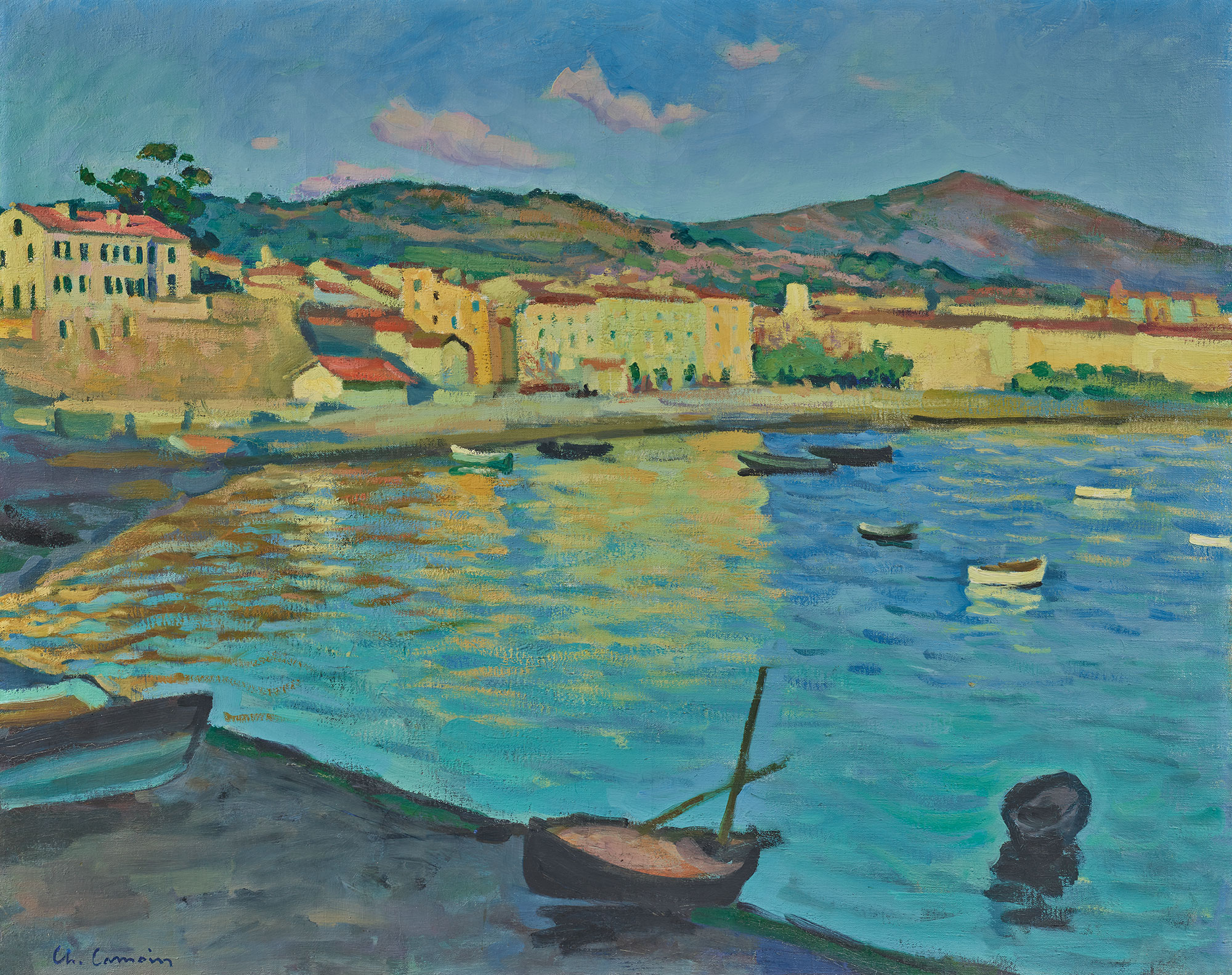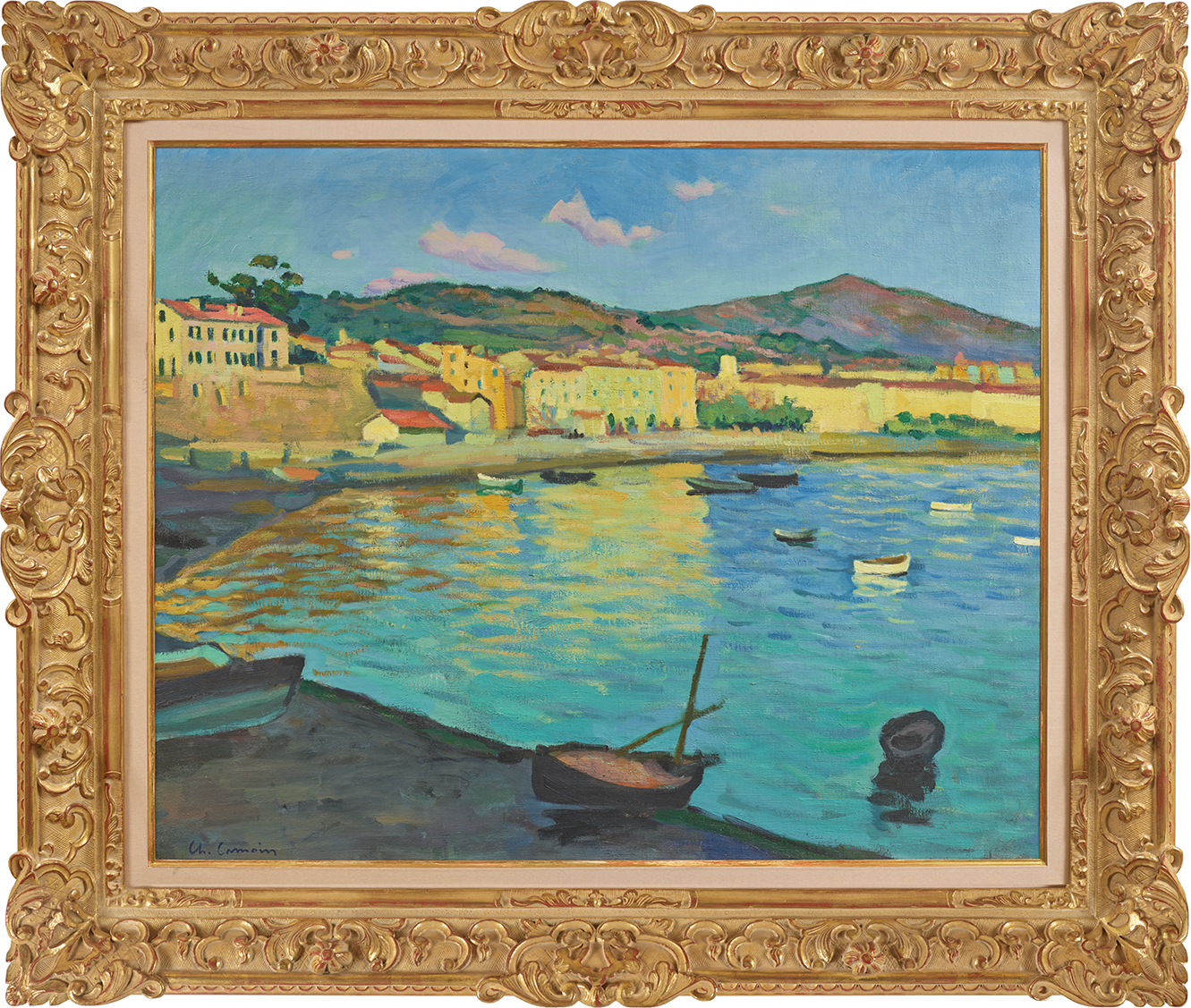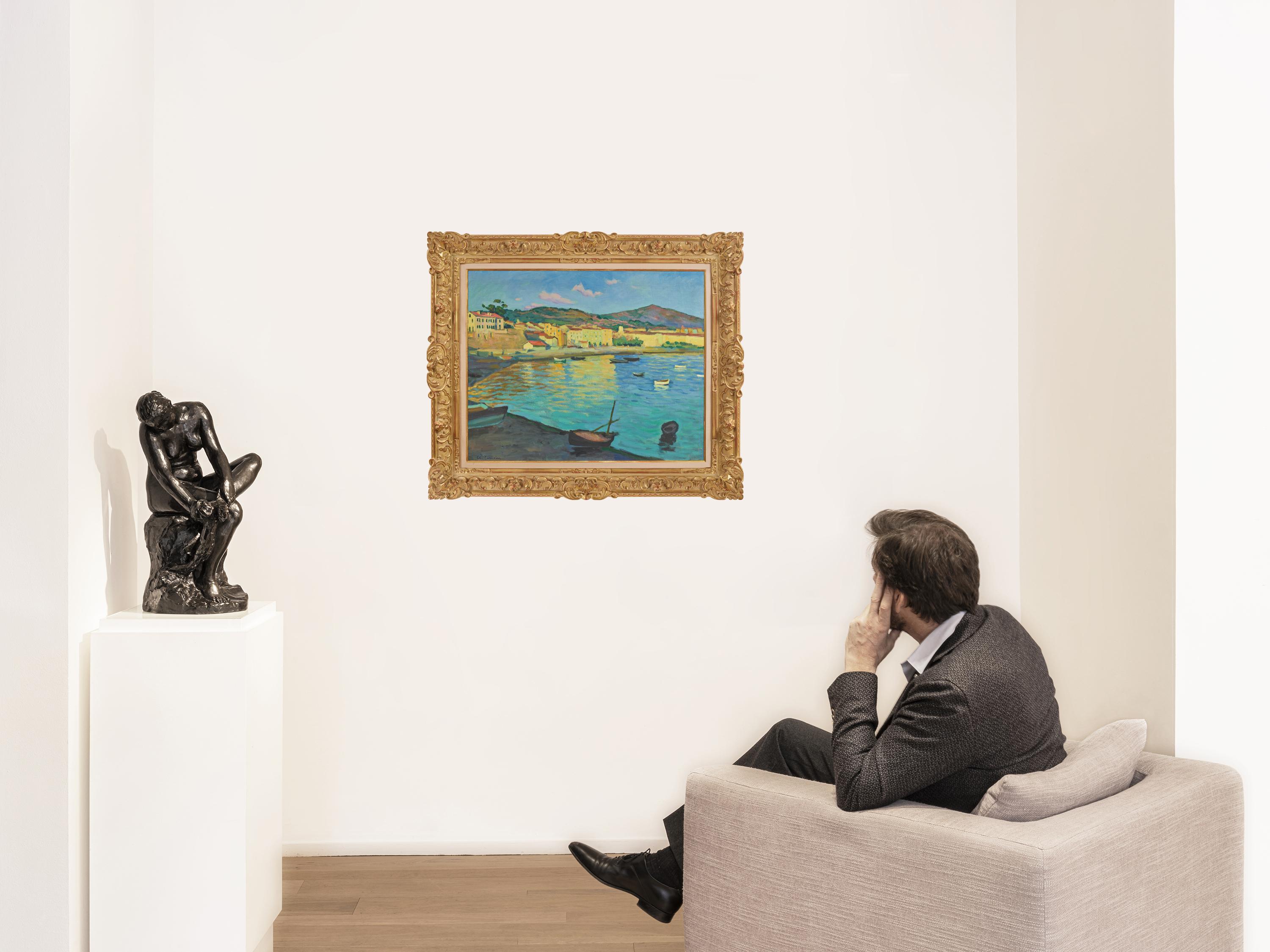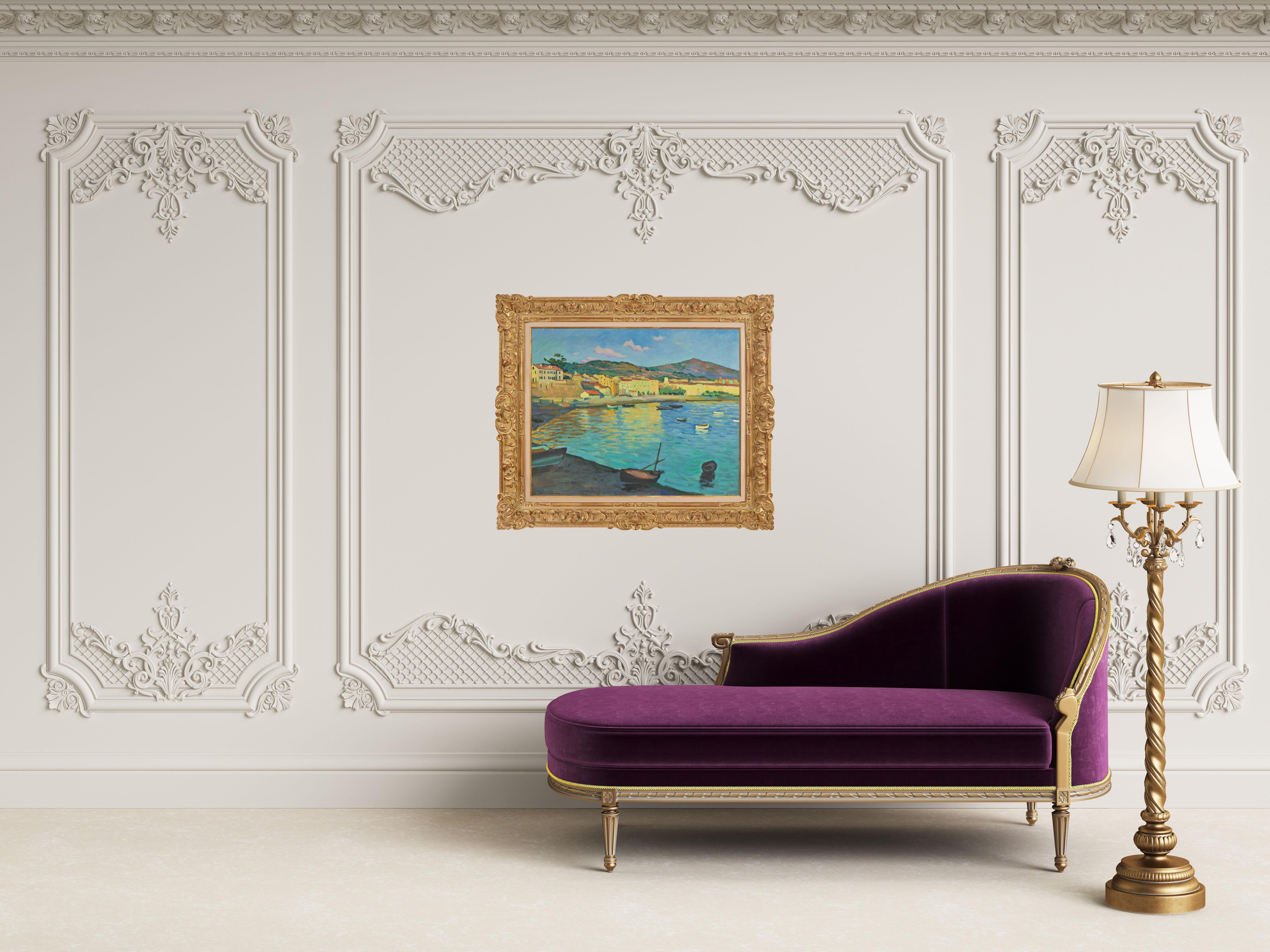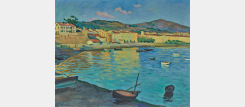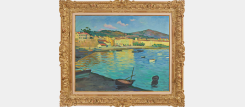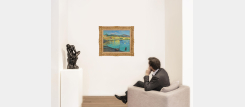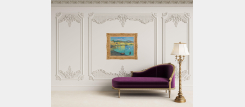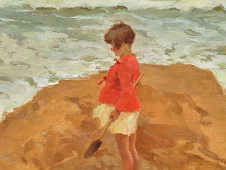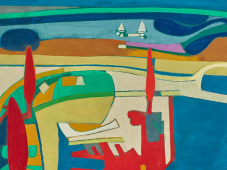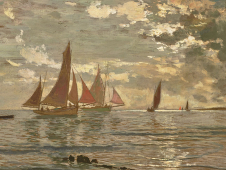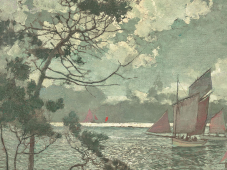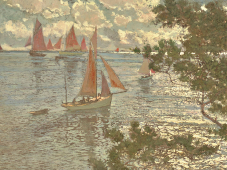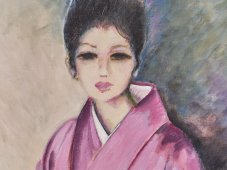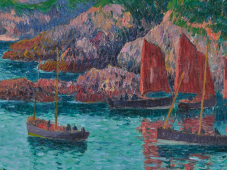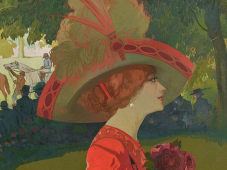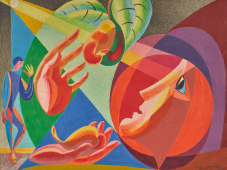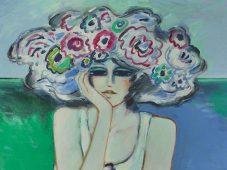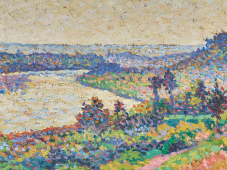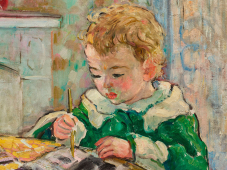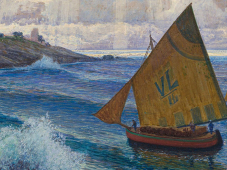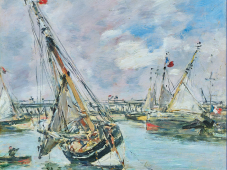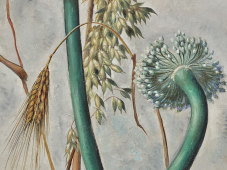The port of Ajaccio, 1906
Salon des Indépendants, Paris, March 20-April 30, 1906, catalog no. 5280,
Cercle de l'Art Moderne, Le Havre, May 16-June 30, 1906, catalog no. 13, under the title “Vue du port d'Ajaccio” (“View of the port of Ajaccio”).
Description of the artwork
At the end of his military service in September 1903, Camoin met up again in Paris with his former comrades from the Moreau studio - Matisse, Marquet and Manguin - with whom he developed a colourist style of painting based on instinct and sensation, capable of translating experience through pictorial equivalents.
Camoin exchanged ideas with Cézanne, sharing with him an ultra-sensory reading of the landscape. He was particularly interested in Cézanne’s processes for organising his sensations on canvas, such as the condensation of forms using colour.
Camoin used colour freely to construct his paintings, using broad, vivid brushstrokes, applied in patches or flat, schematic renderings, leaving the white of the canvas visible and sometimes giving the appearance of rapid improvisation. Although his colour palette was brilliant, it was less vivid than that of his companions. The young Provençal artist knew better how to moderate his sensations in the light of the South, which he had known since childhood and where he regularly stayed. His palette is characterised by pastel pinks, mauves, greens and a characteristic cobalt blue. His paintings exude a kind of gentleness.
Moreover, confirmed by his exchanges with Cézanne, Camoin distinguished himself from his friends by remaining more faithful to the study of the motif: it was in the interplay of motifs that he expressed the decorative requirements of painting and gave free rein to his composition.
It was the scandal of their exhibition at the Salon d’Automne in 1905 that marked their consecraton: the critic Louis Vauxcelles dubbed them the ‘Fauves’.
Camoin stayed in Corsica in January-February 1906 with his partner, Emilie Charmy. It was a real source of inspiration and a pretext for exalting colour. Blue invaded the composition, contrasting with the mauves, while the whole was illuminated by shades of yellow and the Veronese green so praised by Cézanne.
Origin
Private collection, France
Literature
This work is listed in the Camoin archives and will appear in the catalog raisonné currently in preparation.
75008 Paris, France
Saturdays from 2 to 7 p.m.



